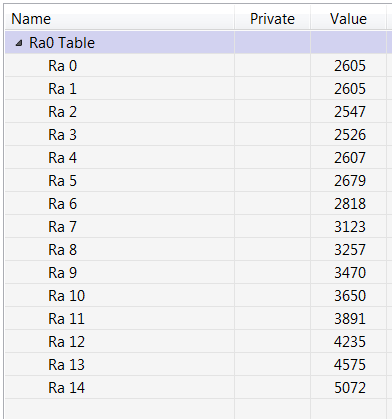My battery is EVE_ER34615 (19000mAh), chem id=0615,
Ra table blow:
whether the table can point out I get the ScaledR and measuredZ value is close to the table`s value.
how the relationship of ScaledR and measuredZ to the table?
how Ra(0-14) correspond SOH(0-100)?
by read
| 0x16…0x17 |
| 0x22…0x23 |
reg, I get the ScaledR and measuredZ logs, but I doubt it`s wrong.
scaledR, measZ, vol, cur, soh
FG info: 72, 72, 3563, -9, 95
FG info: 72, 72, 3564, -8, 95
FG info: 65044, 65044, 3565, -8, 90
FG info: 32767, 32767, 3564, -8, 85
FG info: 2654, 32767, 3566, -8, 80
FG info: 2654, 32767, 3564, -9, 75
I need a way to check my test right or not.
I think the compute ScaledR and measuredZ`value, is in the range of Ra table 0-14
please help me, thank you!


